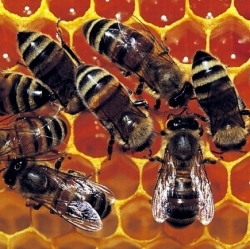
Exposure to a widely used pesticide causes worker bumblebees to grow less and then hatch out at a smaller size, according to a new study by Royal Holloway University of London.
The research, published today in the Journal of Applied Ecology, reveals that prolonged exposure to a pyrethroid pesticide, which is used on flowering crops to prevent insect damage, reduces the size of individual bees produced by a colony.
The researchers, Gemma Baron, Dr Nigel Raine and Professor Mark Brown from the School of Biological Sciences at Royal Holloway worked with colonies of bumblebees in their laboratory and exposed half of them to the pesticide.
The scientists tracked how the bee colonies grew over a four month period, recording their size and weighing bees on micro-scales, as well as monitoring the number of queens and male bees produced by the colony.
"We already know that larger bumblebees are more effective at foraging. Our result, revealing that this pesticide causes bees to hatch out at a smaller size, is of concern as the size of workers produced in the field is likely to be a key component of colony success, with smaller bees being less efficient at collecting nectar and pollen from flowers," says researcher Gemma Baron from Royal Holloway.
The study is the first to examine the impact of pyrethroid pesticides across the entire lifecycle of bumblebees. The topical research is at the heart of a national Bee Health Conference running in London from Wednesday to Friday this week (22-24 January 2014).
Professor Mark Brown said: "Bumblebees are essential to our food chain so it’s critical we understand how wild bees might be impacted by the chemicals we are putting into the environment. We know we have to protect plants from insect damage but we need to find a balance and ensure we are not harming our bees in the process."
Given the current EU moratorium on the use of three neonicotinoid pesticides, the use of other classes of pesticide, including pyrethroids, is likely to increase.
